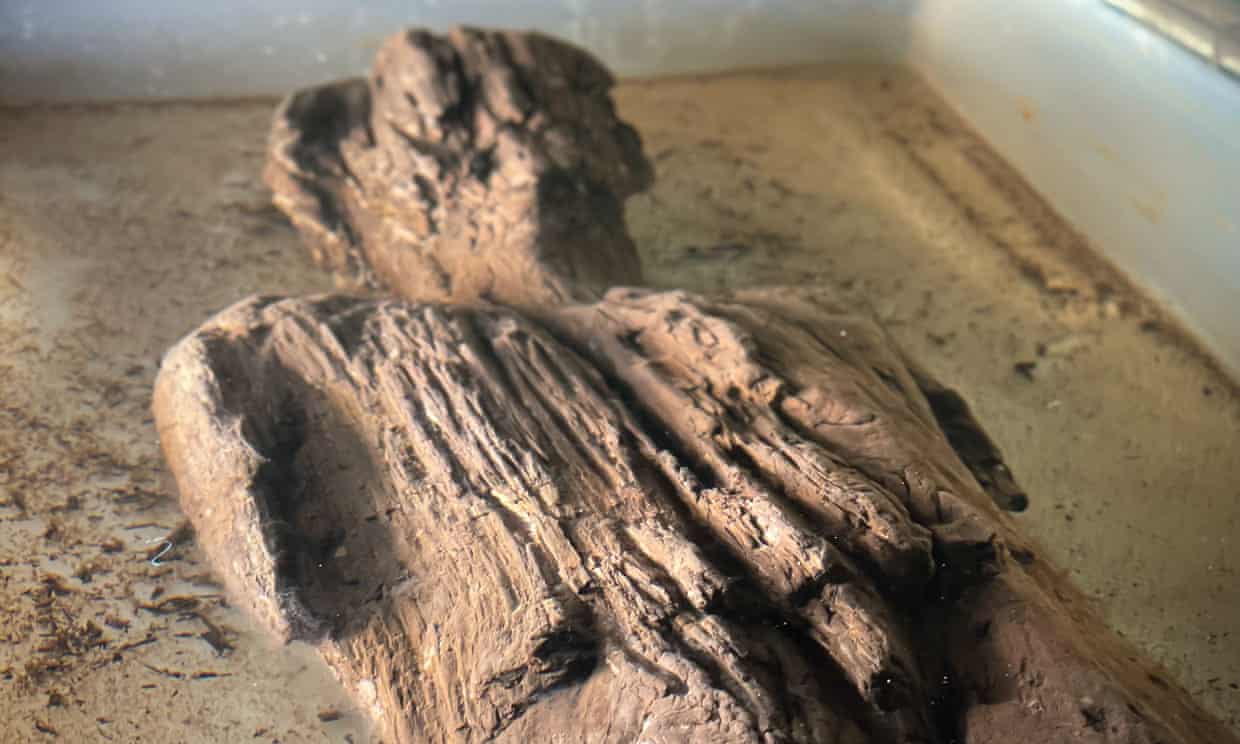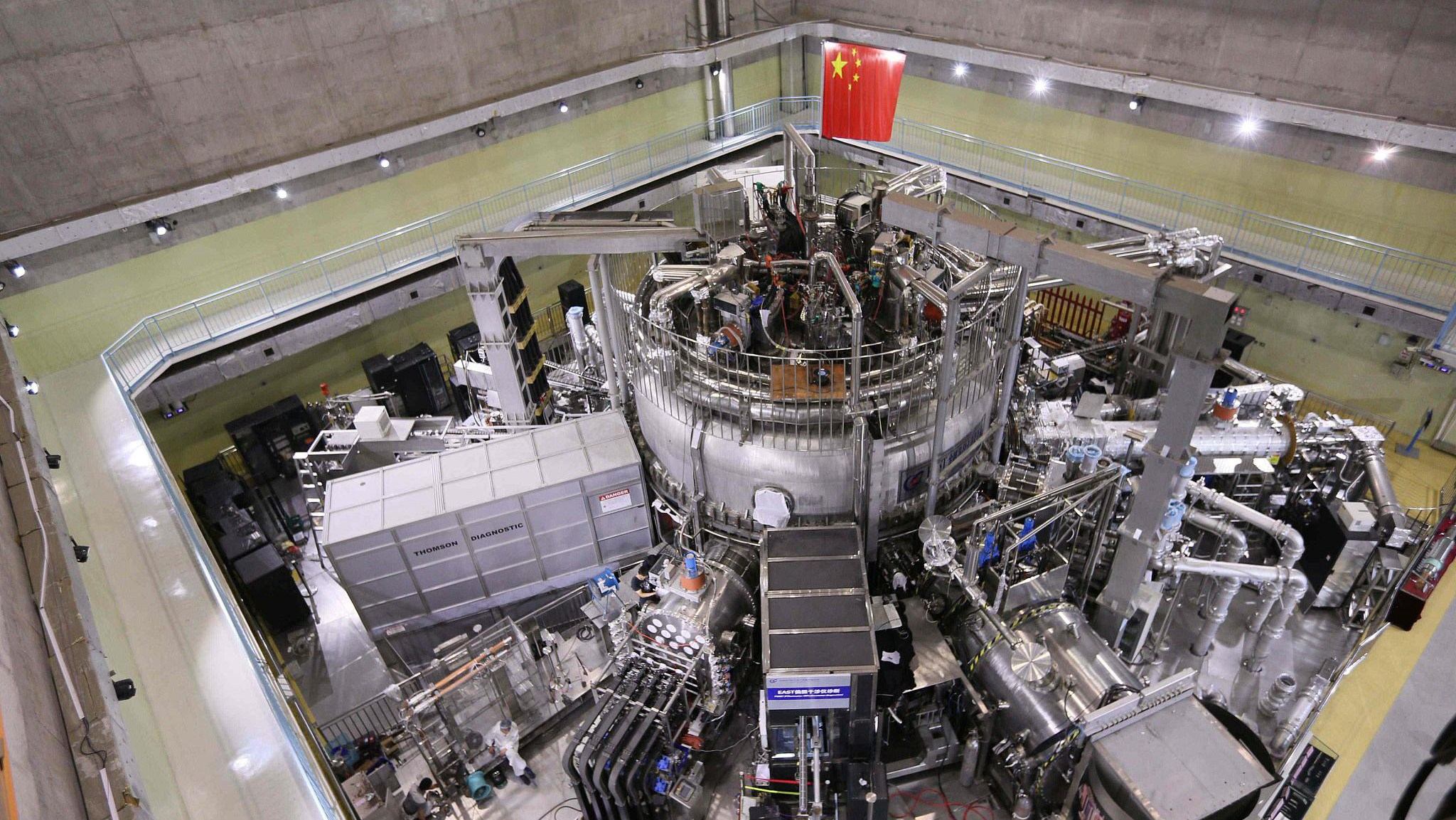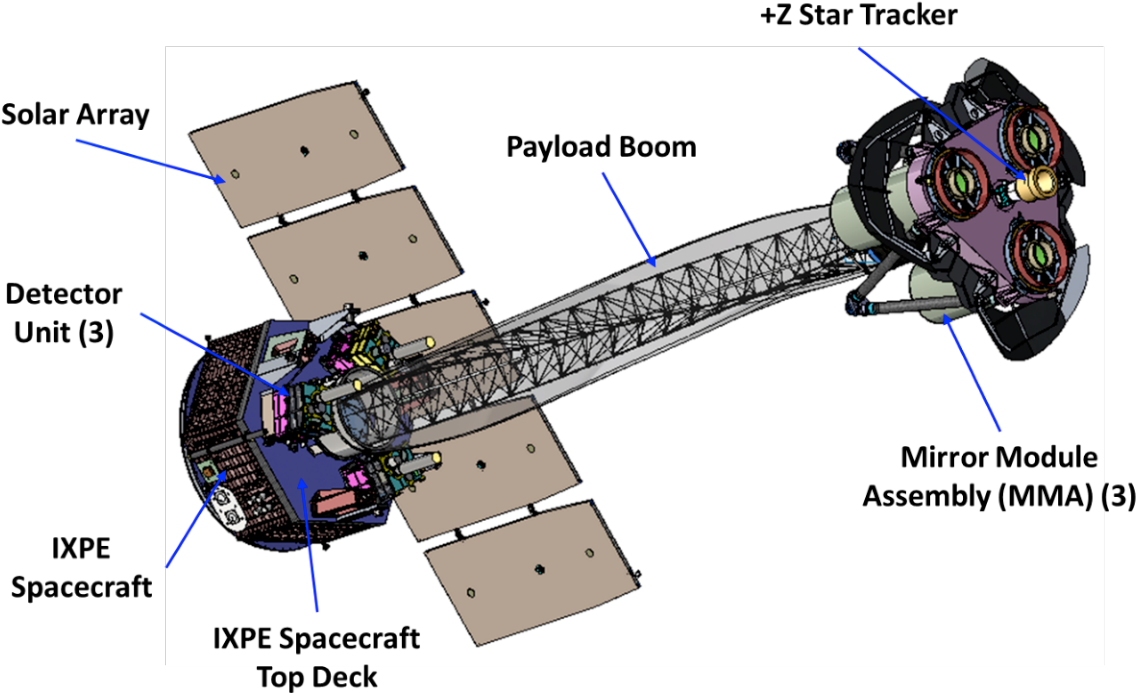Mission is step closer to exploring most energetic and exotic celestial objects in universe
Nasa’s Imaging X-ray Polarimetry Explorer (IXPE) has successfully extended its 4-metre boom arm to assume its operational configuration.
Launched on 9 December atop a SpaceX Falcon 9 rocket from the Kennedy Space Centre in Florida, IXPE is a space observatory designed to study X-rays from black holes, neutron stars and other exotic celestial objects.
To bring X-rays into focus requires a long telescope because mirrors cannot bend the highly energetic rays by large amounts. Instead they have to be coaxed into focus with a device called a grazing incidence telescope. IXPE has three of these. Each sits on the end of the boom arm and directs light into the instruments in the body of the spacecraft.
By measuring the polarisation of the X-rays, IXPE will reveal information about the magnetic environment of their targets. At launch the spacecraft was roughly cubic, about 1-metre long on each side, with the 4-metre-long boom arm folded into a canister 0.3 metres in length. This allowed the IXPE to fit into the nose cone of the rocket. On 15 December, the spacecraft extended the boom. Mission personnel are now working to commission the telescope, ready for science observations to begin in the new year.










